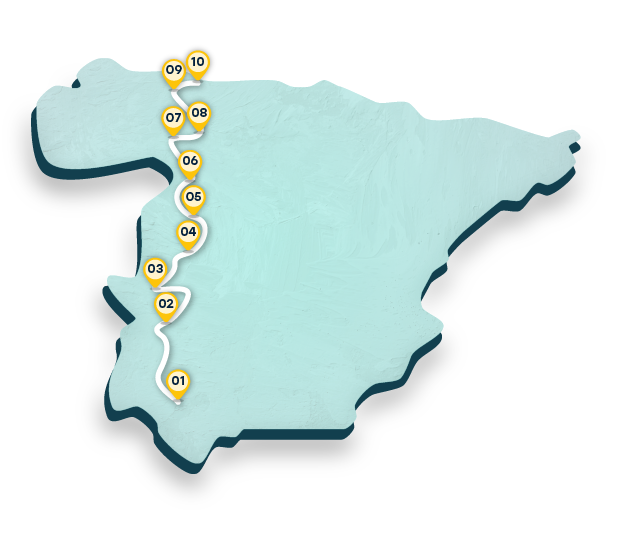A little history...
Journey: By car / Duration: At least a week Journey: Bicycle / Duration: 12 stages Journey: Walking / Duration: About 32 stages
Since ancient times, there has been a route through the mountains, valleys and plains that unites the north and south of Spain, where the first great western culture flourished in the lower basin of the Guadalquivir River, under the mythical Tartessos monarchy at the end of the Bronze Age. Due to its great mineral wealth, the area became significant as a producer of precious metals. When the Romans invaded the Iberian Peninsula in 218 B.C., they gave great importance to roads for covering the whole territory, and the Silver Route —the road that linked Gijón to Seville through Astorga, León, Zamora, Salamanca and Mérida— was one of the most important of them.

Exceptional cultural heritage
The Vía de la Plata was the cornerstone, from the 1st to the 19th century, over which new roads and trails were built, and it acquired importance during medieval times with the livestock tracks, which the Mesta used for moving their flocks on the way to new pastures. Therefore, the Vía de la Plata is an exceptional historical and artistic legacy due to the art and civilisation that were created along it, with cities, circuses, temples, aqueducts, bridges, arches and forts being built, and the development of rich traditional architecture, folklore and craftwork was also favoured...

From Seville to Gijón
The route begins in Seville, the former Hispalis. From there, passing through the ruins of Italica, once a city in Roman Baetica, the route takes us through Zafra and Almendralejo to Mérida, which has been called the Rome of Spain. It continues to Cáceres and Plasencia. In the region of Castilla y León, the route passes through Béjar and Salamanca. Always heading north, we come to Zamora and —through fields of cereal crops and alongside lakes— to Benavente and, from there, to Astorga and León. Campomanes and Pola de Lena are the first stopping points in Asturias, taking us towards Oviedo and Gijón, the final point of the long journey through 29 municipalities.

















